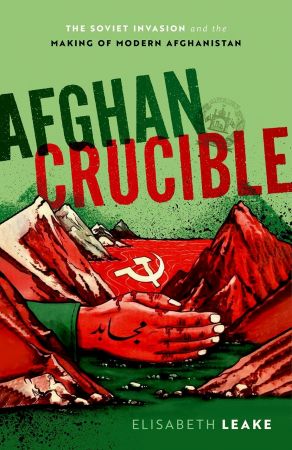
苏联入侵阿富汗的新的全球历史——这场入侵的后果在阿富汗和整个世界仍能感受到
1979年12月24日,苏联武装部队进入阿富汗,开始了长达近十年的占领,并造成了震惊世界的政治危机。在许多观察家看来,苏联的入侵显示了世界超级大国之一在全球冷战中争夺霸权的程度。苏联战争,以及与之平行的美国对阿富汗抵抗战士的秘密援助,将成为冷战最后几年国际政治的一个决定性事件,远远超过苏联自身的灭亡。然而,冷战竞争只是故事的一小部分。苏联军队进入了一个已经与自己交战的国家。
一个世纪以来,阿富汗内部围绕现代国家地位的性质展开了辩论,最终在1978年的一场政变中达到了高潮。在那场政变中,自称是阿富汗共产党的人承诺从根本上重塑阿富汗。相反,爆发的是一场内战,阿富汗人在这场战争中主张阿富汗建国的竞争模式。阿富汗社会主义者和伊斯兰主义者在20世纪80年代成为这场冲突的主角,部分原因是苏联和美国的参与,但他们代表了一场更广泛的运动,旨在在当地表达社会和政治现代性,而非源于外国模式。阿富汗人在与外国人的对话中设定了冲突的许多参数。
这段浩瀚的历史在喀布尔、莫斯科、伊斯兰堡和华盛顿的国家中心、日内瓦和纽约的全球治理大厅、白沙瓦和潘基希尔的抵抗中心之间移动,难民营遍布巴基斯坦边境,讲述了一个比苏联入侵阿富汗更为广泛的故事——这是一部全球危机史,不仅对阿富汗或冷战,而且对国际关系和后殖民国家来说都是如此。
Afghan Crucible: The Soviet Invasion and the Making of Modern Afghanistan
A new global history of the Soviet invasion of Afghanistan – an invasion whose consequences are still felt in Afghanistan and across the wider world
On 24 December 1979, Soviet armed forces entered Afghanistan, beginning an occupation that would last almost a decade and creating a political crisis that shook the world. To many observers, the Soviet invasion showed the lengths to which one of the world’s superpowers would go to vie for supremacy in the global Cold War. The Soviet war, and parallel covert American aid to Afghan resistance fighters, would come to be a defining event of international politics in the final years of the Cold War, lingering far beyond the Soviet Union’s own demise. Yet Cold War competition is only a small part of the story. Soviet troops entered a country already at war with itself.
A century of debates within Afghanistan over the nature of modern nationhood culminated in a 1978 coup in which self-described Afghan communists pledged to fundamentally reshape Afghanistan. Instead what broke out was a civil war in which Afghans asserted competing models of Afghan statehood. Afghan socialists and Islamists came to the fore of this conflict in the 1980s, thanks in part to Soviet and American involvement, but they represented a broader movement for local articulations of social and political modernity that did not derive from foreign models. Afghans, in conversation with foreigners, set many of the parameters of the conflict.
This sweeping history moves between centres of state in Kabul, Moscow, Islamabad, and Washington, the halls of global governance in Geneva and New York, resistance hubs in Peshawar and Panjshir, and refugee camps scattered across Pakistan’s borderlands to tell a story that is much more expansive than the Soviet invasion of Afghanistan – a global history of a moment of crisis not just for Afghanistan or the Cold War but international relations and the postcolonial state.
OR




